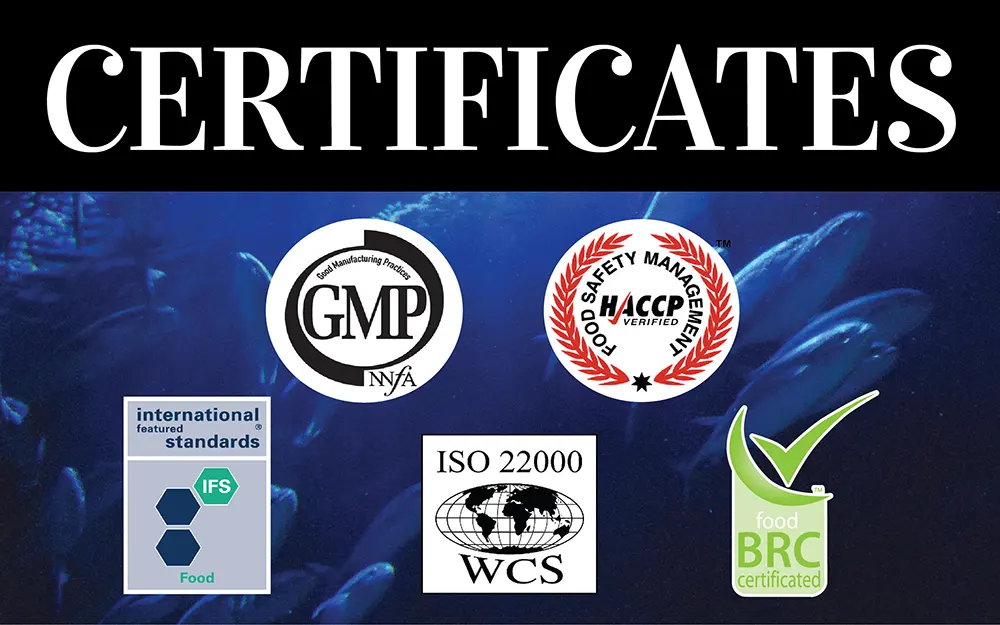
Analyst says China not meeting US seafood purchase commitments under trade agreement: Seafood Source News

Mark Godfrey: Seafood Source
China is not living up to its commitments to purchase U.S. seafood under the 2020 trade agreement between the two sides, according to a trade analyst at a U.S. fishery trade body.
The U.S. China Economic and Trade Agreement, also known as the “Phase One Deal,” was signed in early 2020 and bound China to USD 200 billion (EUR 164.5 billion) in purchases from the U.S. through increasing orders of certain commodities, including seafood. The increase was based on figures for 2017 – the last full year before the trade war began.
The deal committed China to a subsequent ramp-up in 2021, with the deal effective until the end of this year, when the Phase One deal expires. Seafood was one of six categories which were to contribute to a USD 12.5 billion (EUR 10.2 billion) increase in U.S. purchases by China in 2020.
Despite that promise, Alaska pollock shipments to China last year were 55 percent below the baseline of 2017.
“While the precise figure for seafood stipulated in the deal remains classified, official data from China for its 2020 seafood imports shows seafood purchases from the U.S. were significantly below the 2017 baseline,” At-Sea Processors Association Director of Sustainability and Public Affairs Matt Tinning said. “They didn’t even meet the 2017 baseline.”
China, he said, was 44 percent below the 2017 baseline in value terms, a baseline that he adds isn’t the correct metric.
Tinning said he believes the appropriate baseline is where trade would likely have been without the impact of the tariffs and trade war. From 2017 to 2019, the Chinese market for seafood imports was growing strongly, he said, citing data showing China’s seafood imports went from USD 7.3 billion to USD 13.8 billion (EUR 6 billion to EUR 11.3 billion) in the space of those two years, in value terms.
However, China’s seafood imports declined in 2020 in both value and volume terms.
Much of China’s buying of U.S. agricultural commodities has focused on grain and oilseeds. China, in the second half of 2020, activated large state-owned companies who dominate commodities purchasing in soybeans and wheat, according to agricultural trade analysts.
Tinning notes that seafood, by contrast, lacks a similar cluster of state-owned firms – though COFCO and large state-owned fishing firms like CNFC and Liaoyu, as well as Shanghai Bright Foods (parent of Kaichuang), are all significant importers of seafood.
U.S. seafood products – aside from fishmeal, which is tariff-free – remain at a major tariff disadvantage in China, because a 30 percent retaliatory tariff is still in place. That retaliatory tariff means Alaska pollock faces 37 percent in tariffs – 30 percent added to the 7 percent “most-favored nation,” or MFN tariff. That product then has to compete with the much lower 7 percent tariff rate Russian pollock imports receive.
Tinning said that data shows COVID-19 isn’t an excuse for the drop in imports, as China has continued to import seafood from other areas. China’s overall seafood imports in 2020, he said, are up significantly, and the U.S. would see “enormous demand if we have the chance to compete fairly.”
Some China-based seafood trade experts, however, see other issues aside from high tariffs pushing down Chinese imports of U.S. seafood – among them, impacts from both COVID-19 and lower catches in the U.S.
“In short, the tariff imposed by China on U.S.A. seafood might impact to some degree on import of U.S.A. seafood to China, but the major issue is COVID-19, as well as the low catching levels of loligo squid in the past two years,” Landy Chow, general manager of the Guangzhou office of seafood firm Siam Canadian, told SeafoodSource.
Chow said lower catches of California loligo squid, which is normally exported to China, stayed in the domestic market in 2020 due to a shortage of imported replacements, driving down exports.
Chow also pointed to a combination of higher prices (including the tariffs) – as well as “sky-high” ocean freight costs and a weaker renminbi – as the reason China cut its imports of U.S. pollock. In addition, the consumption of processed products fell, Chow said.
“China adjusted their fillet export price significantly [and this], coupled with low consumption of finished products such as fillet and portion resulting from the COVID-19 pandemic in E.U. and U.S.A. and other countries, [means] the fillet export from China has slowed down,” Chow said. “Therefore, China factories import less raw material fish from U.S.A.”
However, Shanghai, China-based seafood marketing executive Robin Wang told SeafoodSource that tariffs are definitely to blame for some companies seeking products outside the U.S.
High tariffs on U.S. seafood imports, he said, mean small- to medium-sized Chinese companies “have definitely stopped working with U.S. seafood because of prices.”
“In cases where product quality was similar, substitute countries like Canada, were sought out,” Wang said. “In cases with close product similarity, price-sensitive businesses still reeling from the previous year’s downturn have been keen to switch,”
Wang, whose SMH International consultancy advises Alaskan seafood exporters, said U.S. exporters have already lost out to competitors.
“Products like sablefish and Boston lobster were prime examples [of which] considerable sourcing shifted to Canada. Both products have been popular for the China market, showing growing demand,” he said. “Other product shifts have included turning to Russian pollock and also [to] Russian king crab and Chilean king crab.”
China’s overall purchases of U.S. goods in 2020 only met 59 percent of the total pledged under the trade deal, while in the first quarter of 2021 China’s purchases of U.S. products covered by the deal reached only 61 percent of its target, according to an analysis published by the Peterson Institute for International Economics.
Despite the low imports, there is some optimism about future cuts in tariffs driving demand. Chinese seafood importer and distributor Michael Peng told SeafoodSource he expects relief on the tariffs in the near term. He said his firm is “laying the groundwork” for the post trade-war business.
“We don’t have the political power to end the tariff, but we are optimistic that this is going to end soon,” he said. “We are starting to rebuild the contact with U.S. suppliers.”
Peng told SeafoodSource that Canada “has been eating America’s lunch for sure on lobster,” with a tariff of 7 percent on Canadian product compared to 25 percent on U.S. lobsters.
“But the Canadian government is keeping a very tight control to prevent the Boston lobster to cross the border to hurt the local fishery,” Peng said. “But the overall market is slow in China, as the price has gotten really ridiculous due to the pandemic, affecting the cost in all areas.”
With U.S. Trade Representative Katherine Tai set to meet with her Chinese counterpart for one of the meetings provided for in the 2020 agreement, Chinese distributors are keen to get U.S. seafood products to meet growing demand.
“Chinese consumers have a positive impression of U.S. products as products of high quality and safety,” Wang said. “As overall seafood consumption slowly increases in China, presenting opportunity for U.S. seafood, all eyes will be closely watching, hoping for signs of change.”
China canceling or lowering tariffs would change the situation radically, but China has thus far appeared careful to match U.S. actions on tariffs and tariff rollbacks, Tinning said. Without action by the U.S., the tariffs will remain in place, he posited.
“China would come back with their tariffs, and they wouldn’t wind back what the U.S. wouldn’t wind back,” Tinning said. “We have noted Secretary Tai’s comments stating China needs to be held to commitments.”
In the meantime, there has been “massive noncompliance” in China’s commitments under the deal to buy U.S. seafood, Tinning said.



